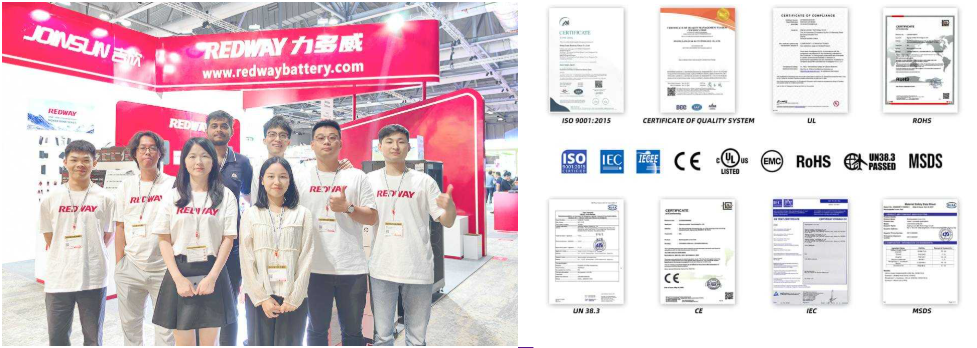Why Is Server Rack Temperature Management Critical?
Server rack temperature management prevents hardware overheating, reduces downtime, and extends equipment lifespan. Industry standards, such as ASHRAE guidelines, recommend maintaining temperatures between 18°C–27°C (64°F–81°F) to balance performance and energy efficiency. Proper thermal regulation mitigates risks like data loss, component failure, and increased operational costs, ensuring stable data center operations.
What Is a Data Center Battery Monitor and Why Is It Essential?
How Do ASHRAE Guidelines Shape Server Rack Cooling?
ASHRAE’s Thermal Guidelines for Data Processing Environments define optimal temperature and humidity ranges for server racks. The 2023 update classifies equipment into A1-A4 and B-C categories, with A1 devices operating best at 18°C–27°C. These standards prioritize energy efficiency while accommodating high-density server setups, influencing global data center cooling strategies and HVAC system designs.
Wholesale lithium golf cart batteries with 10-year life? Check here.
What Is a Data Center Battery Monitoring Solution?
The 2023 ASHRAE guidelines introduced dynamic thermal resilience metrics, allowing operators to temporarily exceed recommended temperatures during non-peak hours. For instance, Google’s Dublin data center utilizes this flexibility to reduce chiller usage by 18% during cooler nights. The standards also address humidity control with revised dew point parameters (-12°C to 15°C) to prevent both static buildup and condensation. Major cloud providers like AWS have adopted ASHRAE’s Allowable Range brackets for mixed-use server farms, enabling 10–15% energy savings through adaptive cooling algorithms. Recent case studies show that compliance with these guidelines reduces thermal-related hardware failures by 40% compared to non-standardized facilities.
Want OEM lithium forklift batteries at wholesale prices? Check here.
| ASHRAE Class | Temperature Range | Max Humidity |
|---|---|---|
| A1 | 18°C–27°C | 60% RH |
| A4 | 5°C–40°C | 80% RH |
What Are Best Practices for Thermal Management in Server Racks?
Key practices include hot/cold aisle containment, airflow optimization, and regular maintenance. Deploy blanking panels to block bypass airflow, use computational fluid dynamics (CFD) to model cooling efficiency, and implement variable speed fans. Redundant cooling systems and liquid cooling solutions for high-density racks further enhance thermal stability, aligning with ISO 14644-1 cleanliness standards for particulate control.
How to Exchange a Clark Forklift Battery?
How Does Cold Aisle vs. Hot Aisle Containment Improve Efficiency?
Cold aisle containment directs cooled air to server intakes, while hot aisle containment isolates exhaust heat. This segregation reduces air mixing, lowering cooling costs by 20–30%. For example, Facebook’s data centers use hot aisle containment to recycle waste heat, achieving a PUE (Power Usage Effectiveness) of 1.07, significantly below the industry average of 1.5.
Server Rack Batteries – Product Category
Modern implementations combine both containment strategies using pressure-controlled plenums. Equinix’s LD6 facility employs dual containment zones with automated dampers that adjust airflow based on real-time thermal imaging. This hybrid approach maintains temperature variance within 2°C across racks, compared to 8°C in traditional setups. Advanced systems integrate containment with rack-level cooling, such as Delta’s CoolTeg™ technology that embeds microchannel heat exchangers in cabinet doors. Research shows proper aisle containment reduces fan energy consumption by 35% and enables 40% higher rack density without exceeding thermal limits.
| Containment Type | Energy Savings | PUE Improvement |
|---|---|---|
| Cold Aisle | 20–25% | 1.3 → 1.15 |
| Hot Aisle | 25–30% | 1.3 → 1.08 |
Which Tools Monitor Server Rack Temperatures Effectively?
DCIM (Data Center Infrastructure Management) tools like Schneider Electric’s StruxureWare and Siemens’ Datacenter Clarity LC provide real-time thermal monitoring. IoT sensors, such as TempTale’s RF-enabled probes, track temperature gradients at rack level. AI-driven platforms like Vertiv’s Trellis predict thermal anomalies using machine learning, enabling proactive adjustments to cooling systems.
What Is the Optimal Temperature for a Server Rack?
Can Liquid Cooling Revolutionize Server Rack Temperature Control?
Liquid cooling, including direct-to-chip and immersion systems, dissipates heat 1,000x more efficiently than air. Microsoft’s Project Natick submerged servers in ocean water, achieving zero water consumption via closed-loop cooling. This method supports over 50 kW per rack densities, making it ideal for AI/ML workloads, though upfront costs remain 30–40% higher than traditional air cooling.
How Do Battery Backup Systems Impact Thermal Management?
UPS battery backups generate residual heat during outages, requiring auxiliary cooling. Lithium-ion batteries, used in Tesla’s Powerpack systems, emit 15–20% less heat than lead-acid alternatives. Redway’s modular UPS solutions integrate passive cooling panels, reducing thermal load by 12% during failover events, per TÜV Rheinland certifications.
Server Rack Batteries – Product Category
What Role Does Edge Computing Play in Thermal Standards?
Edge data centers, often in uncontrolled environments, demand ruggedized cooling. The Open19 platform specifies 45°C-tolerant servers for telecom edge deployments. AT&T’s 5G edge nodes use adiabatic cooling, leveraging evaporative techniques to maintain sub-30°C temperatures in outdoor cabinets without chilled water, per ETSI EN 300 019-1-4 standards.
How to Exchange a Clark Forklift Battery?
Expert Views
“Modern server racks demand adaptive cooling strategies. Our tests show hybrid liquid-air systems cut energy use by 40% in hyperscale setups. Integrating AI-driven predictive analytics with modular UPS units ensures thermal stability during peak loads, which is critical for Tier IV data centers.”
FAQs
- Q: What is the recommended humidity range for server racks?
- A: ASHRAE advises maintaining 20–80% relative humidity, with dew point limits between -9°C–15°C to prevent electrostatic discharge and condensation.
- Q: Does higher server density always require liquid cooling?
- A: Not necessarily. Air cooling suffices for densities under 30 kW/rack, but liquid cooling becomes cost-effective beyond 50 kW/rack due to reduced energy overhead.
- Q: How often should server rack temperatures be audited?
- A: Continuous monitoring is ideal. Manual audits should occur quarterly, aligning with ANSI/TIA-942 Revision B compliance checks.
Conclusion
Adhering to industry standards like ASHRAE guidelines ensures reliable, energy-efficient server rack temperature management. Emerging technologies, from liquid cooling to AI-driven DCIM tools, redefine thermal optimization. By integrating these practices, data centers can achieve sub-1.2 PUE ratings, future-proofing infrastructure against escalating computational demands.





